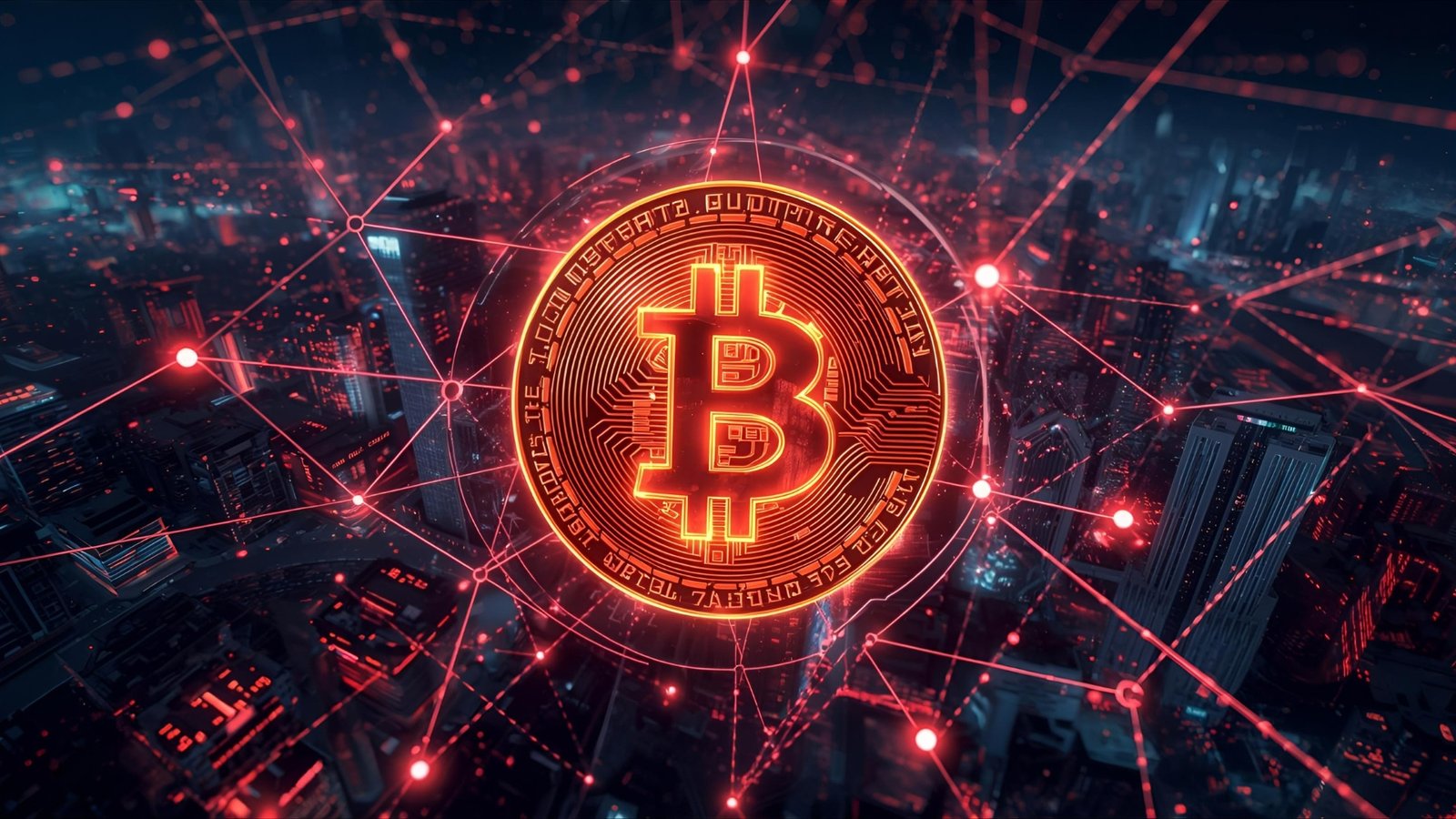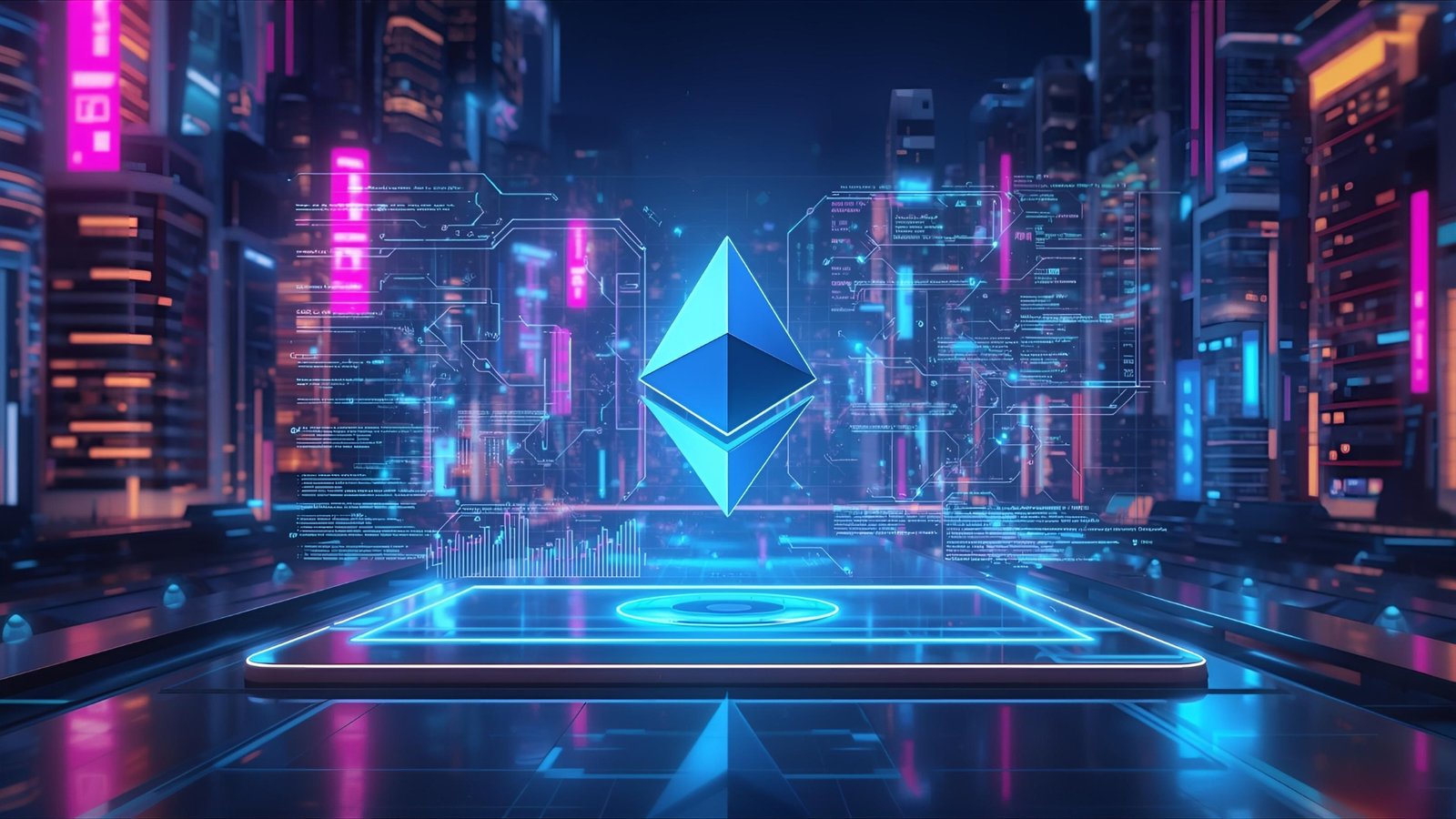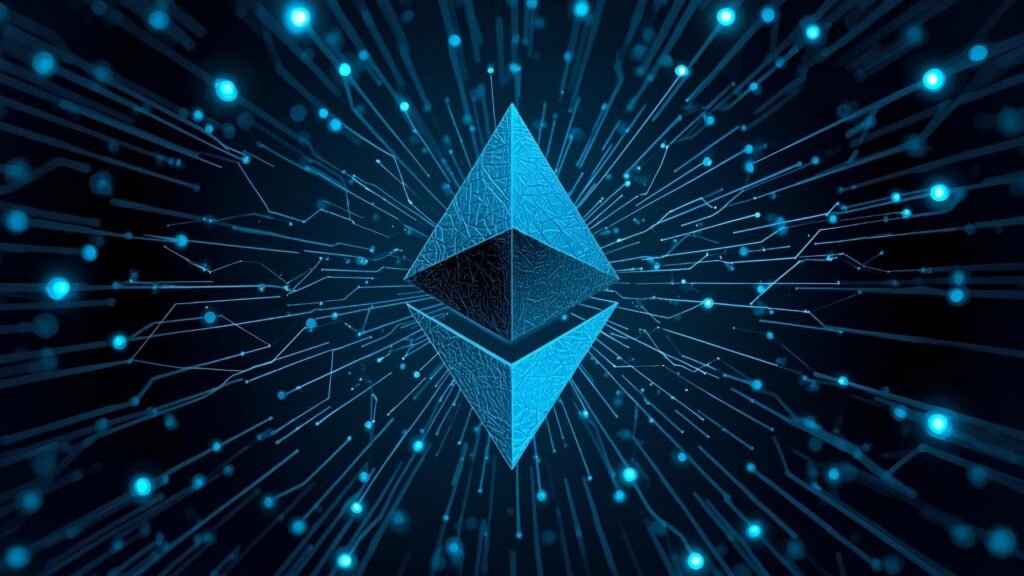The story of Ethereum in 2025 is not just about price charts or on-chain metrics—it’s about builders. Despite intense competition from fast, monolithic chains and a crowded multichain landscape, Ethereum has held its ground as the most resilient, forward-looking developer ecosystem. From the Dencun upgrade’s EIP-4844 breakthrough to the Pectra hard fork’s push toward account abstraction, from the explosive expansion of Layer-2 rollups to the rise of restaking and modular infrastructure, the network keeps compounding advantages where it matters most: developer experience, tooling, and credible neutrality. That flywheel continues to attract teams shipping real products, and those products continue to pull users on-chain.
Independent reports tracking open-source activity consistently show Ethereum atop the developer leaderboard, even as cycles ebb and flow. Electric Capital’s interactive ecosystem dashboards underscore that Ethereum remains the most active hub by monthly developers across crypto, revealing the breadth of contributors and the depth of long-tenured maintainers that support the protocol and its sprawling app and tooling layers.
At the same time, protocol-level upgrades have materially improved what developers can build, how fast they can ship, and whom they can serve. Proto-danksharding via EIP-4844 introduced “blobs”—a new transaction data path that slashed L2 data costs—while Pectra in 2025 folded in long-awaited changes like EIP-7702 for smart accounts and improvements for validators and rollups. The results: cheaper throughput on rollups, more ergonomic smart contract wallets, and a smoother path from hackathon demo to production-grade dapp. In this deep dive, we’ll unpack why Ethereum still leads developer mindshare in 2025, explore the innovations that keep the ecosystem vibrant, and highlight where opportunities lie for founders and engineers entering the space today.
Why Ethereum Still Leads Developer Mindshare
A credible roadmap that compounds
Ethereum’s roadmap made a decisive bet on a rollup-centric future. Dencun (Cancun-Deneb), activated in 2024, was a pivotal step: EIP-4844 created a temporary data space for rollups (the blob market), massively lowering their data availability costs and incentivizing more transactions to settle on Ethereum while executing off-chain. This is precisely the kind of change developers feel immediately: faster prototypes, cheaper user flows, and simpler unit economics. Official documentation and mainstream finance outlets alike emphasized how EIP-4844 reduces the cost to post rollup data and thereby cuts end-user fees at L2.
Pectra (Prague + Electra), which went live on mainnet on May 7, 2025, carried that momentum forward. It bundled a slate of EIPs across execution and consensus layers, notably EIP-7702 to enable smart accounts (a native path toward account abstraction) and improvements that boost rollup throughput and validator operations. For developers, the headline is straightforward: more performant L2s, better wallet UX patterns, and a sturdier base layer to build on.
The richest tooling and documentation ecosystem
From Hardhat, Foundry, and ethers.js to QuickNode and Alchemy guides that keep pace with protocol changes, Ethereum’s developer education and tooling are incredibly mature by 2025. When upgrades land, high-quality explainers arrive almost in lockstep, shortening the learning curve for teams migrating legacy code or experimenting with new primitives like blobs, bundlers, and paymasters. This cadence reduces the “time to hello world” and the “time to production” for new entrants.
Network effects from L2 growth
The post-Dencun period produced an unmistakable surge in L2 activity. Coinbase’s institutional research tracked the jump from roughly 5M daily L2 transactions to 10M shortly after Dencun’s March 2024 release, and by early 202,4, they observed L2s handling the vast majority of ETH-denominated transactions. For application developers, this is the demand signal that matters: users are actually transacting, and costs are low enough to iterate on consumer-grade experiences.
The OP Stack Superchain thesis has also drawn a long roster of partners—from Base and World Chain to ecosystem projects that value shared standards and public-goods funding—fueling a federated L2 constellation that compounds documentation, tooling, and user liquidity. Executives in 2025 even projected that Superchain-based networks could command the lion’s share of Ethereum L2 transactions, underscoring how shared infrastructure can amplify developer reach.
Upgrades That Moved the Needle

Dencun: EIP-4844 and the blob market
EIP-4844 introduced a new transaction type that carries data “blobs”, pruned after a fixed window but guaranteed available while needed. This created a cheaper, segregated lane for rollups to publish data, slashing the most expensive part of L2 operating costs and kick-starting a durable fee decline for end users. The architectural intent—make Ethereum more rollup-friendly without compromising core security—has directly translated to developer traction, as teams can design flows that were previously uneconomic.
Pectra: account abstraction and higher throughput
With Pectra, Ethereum tightened the developer feedback loop again. EIP-7702 pushes account abstraction closer to the protocol layer, making smart accounts first-class citizens. Combined with improvements for validators and blob throughput, Pectra makes it easier to build consumer-grade wallets, implement gas sponsorship models, and support passkeys, social recovery, and batched transactions without brittle workarounds. For founders, this unlocks mobile-native onboarding, gasless transactions, and seamless in-app commerce—capabilities the broader Web3 audience has been waiting for.
The New UX: Smart Accounts and Account Abstraction
Account abstraction (AA) and ERC-4337 matured into practical building blocks by 2025. Developers now compose with bundlers, paymasters, and modular smart contract wallets that support custom signatures (e.g., passkeys), sponsor gas for users, and bundle complex flows into one-click actions. Documentation and production implementations show these features operating over a permissionless mempool, preserving decentralization while drastically improving UX. Adoption analyses through 2025 point to rising comfort with smart wallets as users realize they can enjoy recovery, multisig, and biometric login patterns that feel like mainstream fintech.
For dapps, this reconfigures funnels. Instead of losing users at the “buy ETH” step, developers can integrate sponsored transactions, flexible fee tokens, and recovery flows that don’t require seed-phrase gymnastics. The result is a broader addressable market: gaming, social, and commerce dapps can now serve users who never learned gas economics—and never need to.
L2s Are the New App Layer
Base, Optimism, and the Superchain Effect
Base’s breakout year in 2024 made headlines for sustained transaction growth and a lively builder community, while Optimism continued to expand the OP Stack and its Superchain vision. In 2025, researchers and journalists chronicled how this shared stack approach concentrates documentation, cross-chain standards, and interoperable tooling in one place, so a feature built for one OP-Stack chain often lands on others with minimal friction. That’s developer leverage.
Moreover, the Superchain’s public-goods model—retroactive funding for infrastructure and tooling—recycles value back into developer experience. Grants targeting indexers, data APIs, bridging SDKs, and security tooling reduce the undifferentiated heavy lifting that used to bog teams down. Reports in 2025 highlight how OP’s governance and funding allocations increasingly focus on core infrastructure and developer enablement—another flywheel that benefits anyone building on Ethereum-aligned rollups.
The economics of cheap blockspace
Post-Dencun, L2 gas fees trended materially lower and more predictable. Developers could finally architect onboarding flows that assume near-zero transaction costs for the median user—freeing product teams to optimize for UX instead of gas. Coinbase’s analysis showing daily L2 transactions doubling around Dencun’s launch captures the second-order effect: once costs fall and throughput rises, network effects take over. On-chain in social, minting, micro-payments, and gaming mechanics that were theoretical on L1 become feasible on L2.
Restaking, Data Availability, and the Modular Future
If rollups are the app layer, Ethereum is the settlement and coordination layer that glues everything together. In 2025, restaking via platforms like EigenLayer grew into a massive economic and security substrate. TVL surged beyond previous highs, with multiple sources documenting a march from the low tens of billions toward the $25B mark by mid-2025. For developers, the significance isn’t just TVL; it’s that more services—oracles, data availability committees, co-processors—can bootstrap security using Ethereum’s stake, reducing time-to-market for new middleware and app-chain designs.
This modular stack lets developers compose data availability, execution, and settlement like they would microservices. Whether you’re launching an app-specific rollup, tapping blob capacity for cheap data, or outsourcing security to a restaking marketplace, Ethereum’s design choices broaden the solution space without fracturing core trust.
Developer Experience: Where Ethereum Keeps Winning

Tooling depth and protocol literacy
A healthy developer ecosystem isn’t only about the number of contributors; it’s about tenure and protocol literacy. The Electric Capital data visualization of full-time vs part-time vs one-time contributors shows Ethereum’s bench strength across the spectrum, including a deep pool of long-tenured maintainers who steward critical libraries, clients, and infrastructure. That stability gives startups confidence to pick Ethereum as their base.
Documentation that evolves with the protocol
The clarity of ethereum.org’s roadmap pages—first for Dencun, then for Pectra—isn’t just marketing. It provides trustworthy, versioned references for EIPs and their expected impact, which third-party educators and infra providers then expand into tutorials and code samples. That distributed documentation network flattens the learning curve for new engineers joining a protocol team or a dapp studio.
Security as a first-order principle
Ethereum’s conservative, client-diverse culture pays dividends in production reliability and security posture. By activating upgrades only after extensive testnet rehearsal (and even spinning up new testnets to validate tricky changes, as covered in several 2025 Pectra explainers), core devs preserve the trust developers place in L1 semantics. That, in turn, keeps auditors, wallets, and indexers aligned and ready when changes hit mainnet.
What Developers Are Building in 2025
Consumer apps that hide crypto’s sharp edges
With smart accounts, gas sponsorship, and passkey authentication, dapps finally approach fintech-grade UX. Teams ship mobile-first commerce, subscription, and creator experiences that feel web-native. The building blocks—bundlers, paymasters, session keys—fade into the background, while users experience one-tap actions and familiar recovery flowsOn-chainain media, social, and micro-payments
The fall in L2 costs revolutionizes social and creator economy experiments. Cheap minting, high-frequency tipping, and micro-subscriptions now work at scale. Base’s growth phase illustrated how low fees plus a clear builder message can catalyze entire subcultures of apps and memetic moments that would have been cost-prohibitive on L1.
DeFi’s new primitives: intent layers, restaking, and co-processors
DeFi in 2025 leans into intents, MEV-aware routing, and restaked services that offer verifiable compute or data. Developers combine EigenLayer-secured services with intent-based trading and settlement to improve execution quality while maintaining Ethereum-grade trust. The optionality to deploy app-chains or validium/volition modes gives teams more levers to tune cost, latency, and security.
See More: Ethereum (ETH) News 42 Day Staking Withdrawal Delays Explained
Practical Guidance: Building on Ethereum in 2025
Choose the right L2 for your product
If your app depends on interoperability, shared liquidity, and rapid iteration, OP-Stack chains in the Superchain may offer a shorter path to market thanks to homogenous tooling and funding programs. If you need specific VM features or high throughput for gaming or social graphs, consider Arbitrum, Base, or zk-powered L2s that match your latency and cost profile. Ethereum’s big advantage is that you can make these choices without leaving the settlement layer.
Design with smart accounts from day one
Start with account abstraction principles: build around smart contract wallets, integrate paymasters to sponsor gas when it smooths onboarding, and use passkeys for passwordless login. Not only will this reduce churn at the top of your funnel, it will also make compliance and risk management cleaner, since you can enforce spending limits, session scopes, and multisig policies in code.
Lean on blobs and data-efficient patterns
If your app emits lots of state or event data, architect for blobs and off-chain data availability where possible, then commit succinct proofs or summaries to L1. This lets you scale content-heavy or social workloads while keeping costs predictable post-Dencun.
Embrace modular security
Explore restaking to bootstrap security for middleware or app-specific services. Whether you’re launching an oracle, a shared sequencer, or a specialized data service, tapping into Ethereum’s staked base via EigenLayer shortens your path to credible security. Do the work on risk modeling and slashing conditions, and you can ride a secular trend in 2025—protocols renting security instead of reinventing it.
Addressing the Counterarguments
Skeptics will note that other chains have enjoyed surges in new developer sign-ups during 2024–2025, sometimes outpacing Ethereum in short-term attraction. That’s true—and healthy. Yet the aggregate picture still shows Ethereum with the largest base of active developers and the most durable long-tenured contributors. The difference matters: ecosystems win not by week-over-week headcount, but by sustained delivery on a shared roadmap and by the quality of their tooling, security, and production deployments. Electric Capital’s longitudinal data and the steady march of upgrades like Dencun and Pectra suggest Ethereum is still playing—and winning—the long game.
Conculsion
In 2025, Ethereum remains the gravitational center of Web3 development because it compounds advantages where it counts. EIP-4844 made rollups cheaper and more capable; Pectra brought smart accounts and throughput enhancements to the fore; OP-Stack Superchain expansion multiplied tooling and liquidity network effects; and restaking unlocked modular security for a new wave of middleware and app-chains. The result is a developer experience that is simultaneously more powerful and more approachable—and that combination is hard to beat.
Whether you’re shipping a consumer app, building critical infrastructure, or designing a specialized rollup, Ethereum’s ecosystem in 2025 gives you the broadest, safest, and most innovative canvas to paint on. That’s why the builders are still here—and why the next breakout products will likely be, too.
FAQs
Q: Is Ethereum still number one for developers in 2025?
Yes. Cross-ecosystem analyses that track open-source activity show Ethereum with the largest pool of active contributors in 2025, including a deep bench of long-tenured maintainers and full-time developers. The upgrade cadence and tooling depth reinforce that lead.
Q: What did Dencun (EIP-4844) change for developers?
Dencun introduced blobs via EIP-4844, a cheaper data lane for rollups. It dramatically reduced data availability costs, which in turn brought down end-user fees on Layer-2 and made high-frequency use cases economically viable.
Q: How does Pectra improve app UX?
Pectra (live on May 7, 2025) enables smart accounts through EIP-7702, improves validator and rollup operations, and increases blob throughput. Developers can ship gasless transactions, passkey logins, and batched actions that feel closer to mainstream fintech.
Q: Are L2s actually where users are?
Yes. Institutional research tracked a step-function increase in daily L2 transactions around Dencun, with L2s handling the lion’s share of ETH-denominated activity. That on-chain volume is a strong signal for builders targeting consumer apps.
Q: What’s the deal with restaking, and why should developers care?
Restaking lets protocols reuse Ethereum’s economic security for new services—oracles, data layers, or coprocessors—without bootstrapping security from scratch. TVL in restaking platforms such as EigenLayer surged into the tens of billions by mid-2025, indicating strong demand for modular security




















